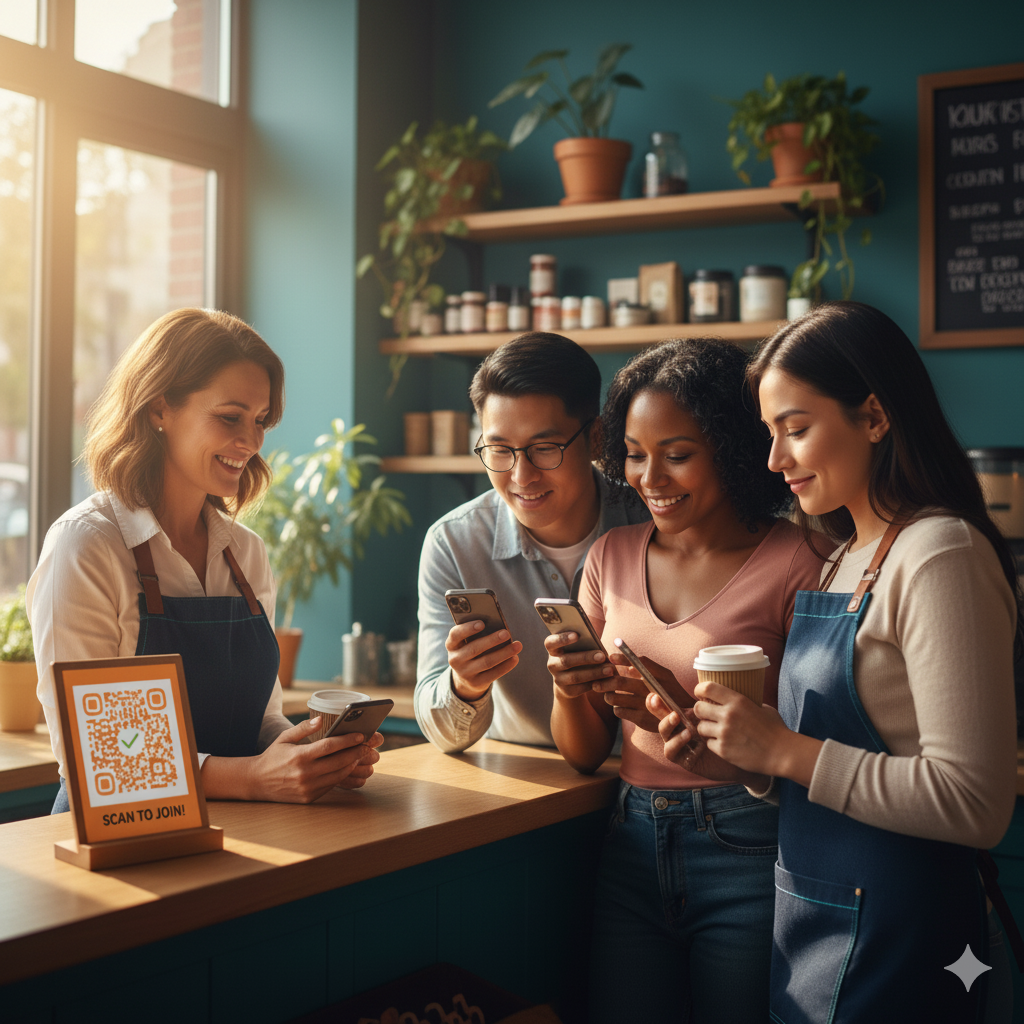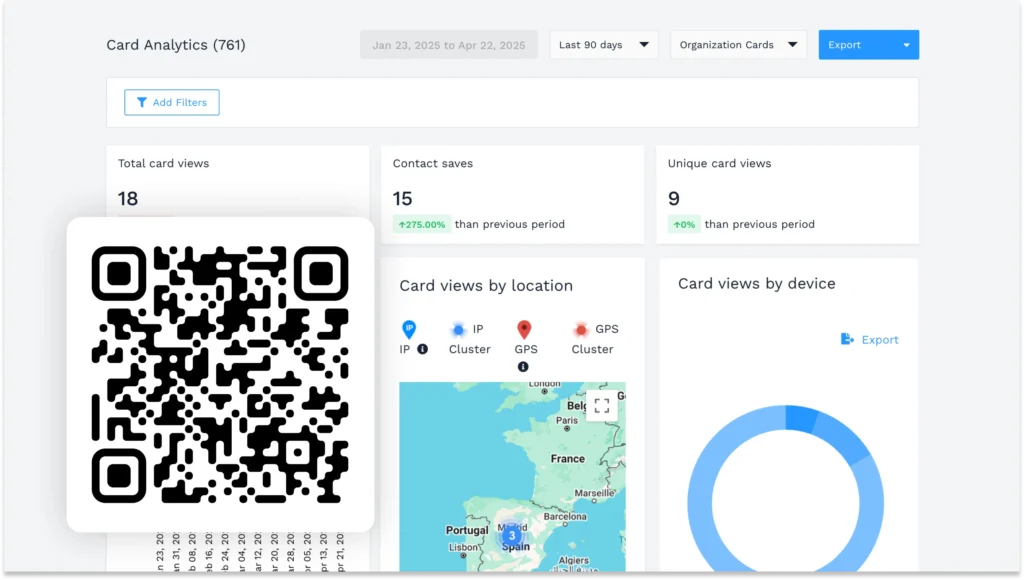What Customers Want From QR Codes (And What Brands Miss)

The challenge isn’t getting people to scan QR Codes anymore—we’ve already won that battle. With QR adoption now a part of everyday behavior, the real question is: what happens next?
Most brands miss the mark during the post-scan experience. You’d be surprised how often a scan leads to a blank page, a 404, or a generic homepage that has nothing to do with the customer’s intent.
Instead of seizing that rare moment of attention, you risk alienating your audience. Worse, they may quietly choose never to scan your QR Codes again.
This gap is exactly why we ran a survey. We wanted to understand how organizations use QR Codes to drive real engagement, not just impressions. In Uniqode’s State QR Codes 2025 report, you learn how people scan and what they expect in return. To see how these behaviors align with broader market patterns, explore the latest QR Code adoption trends shaping 2025.
Because every scan signals intent; if your brand isn’t ready to deliver a relevant, effortless experience, you’re missing the opportunity entirely.
QR Codes work—but only when the experience on the other side meets the customer’s expectations.
In this article, we show you how to turn every scan into a moment of meaningful engagement.
How users scan and where they engage
People typically scan QR Codes when something prompts them at the moment. It could be a nudge on packaging, a payment screen, or a sign they pass while walking. In that instant, the QR Code becomes the trigger, and their phone becomes the bridge between curiosity and action.
That frictionless access is part of what makes QR Codes so effective. However, it also raises the bar for what follows. If the experience post-scan doesn’t match the speed and ease of the scan itself, you’ve already lost momentum.
Now, let’s talk about where those scans are happening most.

- Mobile payment apps (68%): In markets where scan-to-pay has become standard, QR Codes are expected because they enable transactions to happen within seconds.
- Product packaging (63%): Users are scanning to dig deeper to check specs, usage guides, or offers on products. It’s often the bridge between in-store browsing and post-purchase customer engagement.
- Loyalty programs (61%): When customers scan a loyalty code, they’re not chasing points but looking for acknowledgment and value. That means they expect to enroll, earn, or redeem rewards instantly, without jumping through hoops.
- Security and authentication (59%): Scanning to log in, approve access, or verify identity has quietly become part of daily life; it’s functional, fast, and trusted.
- Informational use (57%): Sometimes, it’s just about getting answers. People want to feel sure before they buy, sign up, or take action. The correct information, delivered instantly, makes the decision feel safe.
- Advertisements (54%): Whether on a billboard or a shelf display, users scan when something catches their eye (a discount, a product teaser, or a clear CTA).
- Restaurant menus (52%): Menus are known to be a major entry point. Users scan to place orders, split bills, leave tips, or save preferences.
The real insight here is that QR Code scans aren't limited to one environment, device, or use case. They happen at the point of curiosity, need, and action, and in many cases, they replace traditional touchpoints altogether.
As a marketer, you should think of a QR Code less like a tool and more like a digital handshake. If it is out of place or leads nowhere useful, you’ve missed your shot to be part of the customer’s flow, and they’re already moving on.
How brands can get users to scan
Now that we know the scan isn’t the barrier, let’s talk about what’s driving people to pull out their phones in the first place, because it’s not random.
Most users don’t think twice before scanning a QR Code, but that doesn’t mean the act itself is mindless. Behind every scan is a choice, and behind that choice is usually a clear intent. The question brands should be asking isn’t will people scan this?, it’s What’s the state of mind when they do?
According to Uniqode’s State of QR Codes report, most people aren’t scanning just for fun; they’re doing it to solve a problem, get clarity, view something useful, or save time. And if your QR Code experience doesn’t deliver on that intent? That person likely won’t scan again.
There is a gap between what they expect, what they get and this gap comes at a cost.
Before getting into the gap, let’s take a look at why people scan a QR Code.
Information
79% of users felt QR Codes should convey the right information.
What users expect: Instant and relevant information
What they often get: Generic websites that makes customers hunt for answers.
The cost of getting it wrong: Lost transactions and damaged brand perception.
This means when someone scans for information, they’re not hoping to stumble into it; they expect it to be waiting at the end of the scan. For your users, it's not just about product specs or more details. They need that information to make decisions.
The QR Code then becomes a decision-support tool, answering questions like, Should I buy this? Is this service right for me? What’s next in this process?
If you can’t deliver clarity within the expected window, you’ve wasted that customer’s attention.
QR Codes act as intent gateways and that intent is only growing sharper. In 2025, users are scanning with clear expectations, and brands must match that.
Convenience
66% of users expect convenient experiences when they scan.
What users expect: Frictionless transactions and access. The physical-to-digital bridge needs to be immediate and uninterrupted.
What they often get: Multi-step processes or non-functional QR Codes that create frustration.
The cost of getting it wrong: 48% abandonment rate on slow experiences.
Scanning is now the customer’s way of fast-tracking their journey. They bypass menus, avoid search bars, and skip over chatbots. A QR Code is supposed to drop them straight into the moment they want to be in.
The only thing that breaks that flow is a poorly designed experience on the other side. A slow load, too many clicks, or asking them to start over from scratch ruins the utility.
Basic QR Code implementation isn’t enough anymore. Brands need to remove friction, not just digitize it.
Value
56% of users will only scan if they see value in it.
What users expect: Exclusive access, special offers and unique content.
What they often get: Publicly available content behind a QR wall.
The cost of getting it wrong: Declining scan rates and engagement.
The idea that QR Codes are “just links” is outdated. In the customer’s mind, scanning is a transaction, and what’s expected in return is value. This may be an exclusive offer, early access, or perks regular visitors don’t get. Whatever the form, it is clear that the bar for user expectations has moved up.
If what’s on the other side feels like a dead-end, or worse, identical to what anyone else sees, you’ve taught your audience that the scan wasn’t worth it. This is where personalization, timing, and placement matter more than ever.
Brands that are a step ahead aren’t just offering incentives; they’re aligning value with context. And that’s exactly what Uniqode means when it says the scan is no longer simply a marketing play, but also a brand experience checkpoint.
Trust
53% of users have to trust QR Codes before scanning.
What users expect: Secure, reliable interactions.
What they often get: Unclear endpoints and questionable authenticity.
The cost of getting it wrong: Permanent loss of customer trust.
Users don't see QR Codes as shortcuts, especially when they're supposed to help verify product authenticity, check safety standards, or confirm a source. What users are really looking for is reassurance.
They ask, “Can I trust what I’m about to use, eat, sign up for, or share my data with?” If that trust isn’t immediately earned through the experience behind the code, it could be a loss for the brand.
This is especially critical in industries like healthcare, finance, and consumer goods, where a misleading QR Code can have legal consequences.
Personal
39% of users react better to personalized scan experiences.
What users expect: Recognition and relevance. Experiences based on when, where, and how they scan.
What they often get: One-size-fits-all responses.
The cost of getting it wrong: Missed opportunities for loyalty building.
Not every QR Code scan is transactional. Sometimes, it’s personal. Users can scan to access past interactions, view personalized offers, or pick up right where they left off.
This is where brands have an opportunity to create continuity. A QR Code can serve as a link between past engagement and current intent.
The more your QR Code flow feels personal, contextual, and timely, the more likely you are to build loyalty, not just momentary attention.
Challenges and solutions for brands to maximize QR Codes
This State of QR Codes report has shown that people are scanning, but some brands are underdelivering in the moments that matter most. Let’s break down two common mistakes and how to fix them.
Mistake 1: QR Codes lead to generic, low-effort destinations
As mentioned earlier, far too many QR Codes let users land on a generic page. There’s no context, clear next step, or payoff for the user’s attention.
What brands should do instead:

Think about where the scan is happening and what the user expects at that exact moment. A QR Code on packaging? Give them product-specific content—usage tips, setup guides, or even buy-again options. At checkout? Tie it to rewards or customer feedback. At a booth or event? Don’t beat around the bush, go straight to the value.
Over 84% of users are more likely to scan if the content they access is useful and relevant.
That’s your cue, because it’s not just about getting the first scan. It’s about making sure the second one happens too.
Mistake 2: QR Codes are treated like one-off assets, not part of a larger strategy
Many brands and marketers still treat QR Codes like stickers—add them last, make it someone else’s task. But what gets overlooked is how they can serve as direct, trackable entry points into a user journey, especially when integrated with analytics or personalization tools.
What brands should do instead:

Start building QR Code experiences the same way you would any owned marketing channel. You can also look at how leading brands design better post-scan journeys to keep engagement alive beyond the first scan. Use tools like Uniqode that offer dynamic QR Codes to route users based on time, device, geography, or campaign source that can help you test versions and monitor scans. Swap out destinations in real-time and use A/B results to see what actually moves people from scan to action.
The report states: 70% of users allow branding to influence their scanning decisions.
That shows how important it is to make sure your QR Code strategy works for your brand.
When QR Codes are treated like an afterthought, they underperform. But when designed with intent context, timing, and the user’s mindset, they become influential touchpoints that drive actual results.
Want your next QR campaign to work harder next time? Start with designing the post-scan experience, then build backward.
Get the full picture
There’s no doubt that the way people scan and what they expect in return is different from what it used to be. This isn’t just about codes and clicks anymore. It’s about meeting momentary intent and turning it into a connection.
Most brands are still playing catch-up, but the ones getting it right? They’re thinking beyond the scan.
Uniqode’s full report breaks down the behaviors, expectations, and strategic moves shaping how QR Codes perform in the real world. This report is a good place to start if you’re rethinking your approach (or want to see what your competitors already know).
